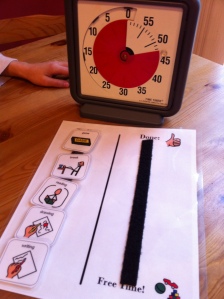“He can’t sit still at school!” “She always gets annoyed by her brother at home when they are playing!” So often we want to focus on the problem areas, the situations where our children aren’t meeting our expectations, that we forget to look for clues in the activities and environments where they are excelling. As you work on communication skills with your child, give thought to the environments where they are thriving.
I work with children who can hold it together well at school, but unleashed upon the home environment, every bit of self-control seems to fly out the window. They disobey, push their parent’s buttons, and antagonize their siblings. Conversely, I also know children who can’t seem to focus at school on their academic work, but stay occupied and focused for an hour building a Lego set with 1000 pieces in their backyard at home.
You can find clues in your child’s favorite pastimes. If they hold it together well at school, look at the structure in place within the school environment. There is a set schedule, set rules, and announcements which are reviewed every day. The expectations are consistent, the transitions mostly predictable, and the time for breaks and down time logical. Some of our most difficult children need the most structure. They need overkill with repetition, transition preparation, and a review of expectations.
If your child is falling apart at school, consider how their learning can tap into the multisensory environment they love at home. Outside time, physical breaks, sensory reinforcement (like sitting on a wiggle cushion or having a hand-fidget), hands-on learning… all can help refocus and energize their learning.
What ideas can you find from the activities your child loves? Why do they love that karate class? How about digging in the backyard? What makes them read for hours in the backyard hammock? Make a list of everything you can think of that about that environment (“She loves reading fantasy, she can go at her own pace”), and include the sensory components of each (e.g. “it’s sunny and quiet, the hammock rocks back and forth,”etc.) Then circle the elements of each activity that you could replicate for another, more challenging situation.
Need help? List your child’s favorite activity and environment below, and we’ll come up with some ideas.


One thought on “Getting the Environment Right (and focusing on the positive)”